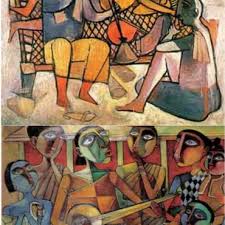
While metros like Mumbai and Delhi get much of the attention, India’s tier 2 cities are experiencing their own street art renaissance. Cities like Bhopal, Kochi, Guwahati, and Indore are seeing vibrant wall art movements emerge—often rooted in local culture, folklore, and grassroots activism.
What sets these regional movements apart is their connection to place. Artists draw directly from the city’s rhythm—its dialects, cuisine, heritage, and daily life. A wall in Varanasi might depict boats and ghats, while one in Madurai might reinterpret temple architecture with modern twists.
These projects are often community-led, involving students, NGOs, or local artists working without big budgets. The focus is on storytelling rather than spectacle. Wall art becomes a medium for education, identity, or even protest—expressed in a style that resonates with the locals.
In many towns, artists are painting on school walls, underbridges, and abandoned structures to reclaim public space for beauty and dialogue. The murals are typically multilingual and reflect a rich tapestry of folk motifs and urban commentary.
Social media is helping these movements gain visibility, allowing regional talent to reach national and global audiences. Festivals and street art walks are also cropping up, turning forgotten corners into cultural hotspots.
These wall art movements in tier 2 cities show that creativity isn’t limited by geography. With brushes in hand and stories to tell, India’s smaller cities are painting their way into the nation’s visual identity.
